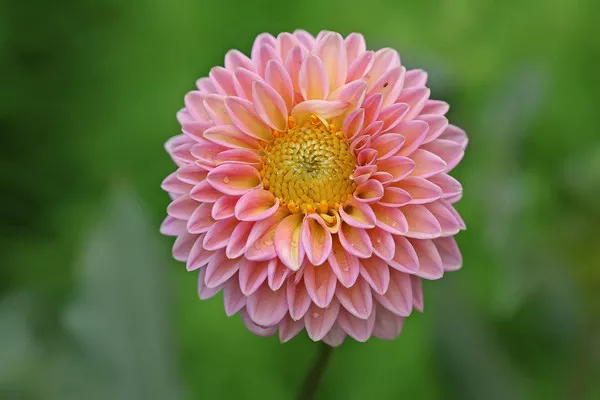Flowers have long been a symbol of beauty and sentiment, used to celebrate special occasions and convey heartfelt messages. While we often associate flowers with being vibrant and fresh, they can endure surprisingly well even when removed from their water source.
The Remarkable Survival Mechanism of Flowers
Flowers are truly remarkable creations of nature, designed to endure and adapt to various environmental conditions. While most plants need a constant water supply to survive, cut flowers can persist without water for an extended period. This is due to their innate ability to seal their vascular system, which prevents excessive water loss and helps them retain moisture for longer.
Variability Among Different Flowers
The longevity of a bouquet without water depends significantly on the type of flowers used. Some flowers are more resilient than others, boasting the ability to stay fresh for an extended period. For instance, roses, lilies, and chrysanthemums are known for their impressive shelf life when removed from water, while delicate blooms like hydrangeas and tulips may not last as long.
Optimal Conditions for Longevity
To maximize the lifespan of a bouquet without water, it’s crucial to provide optimal conditions for the flowers. Keep the bouquet away from direct sunlight and excessive heat, as these can accelerate wilting. A cool, shaded spot is ideal for preserving the freshness of the flowers. Additionally, avoid placing them near appliances that emit heat, like radiators or ovens.
Trimming and Conditioning
Properly preparing the flowers is essential for extending their life without water. Start by cutting the stems at a slight angle to ensure a larger surface area for water absorption. Remove any leaves that will be submerged in water when you eventually place the bouquet back in a vase, as submerged leaves can lead to bacterial growth. Conditioning the flowers by placing them in water for a few hours before removing them is also beneficial, as it helps replenish their moisture content.
Hydration Gel and Water Alternatives
Hydration gels, available at florist shops and garden centers, can be an excellent tool for prolonging the life of a bouquet without water. These gels absorb water and release it slowly, keeping the flowers hydrated. Alternatively, some resourceful individuals have experimented with water alternatives like carbonated beverages or floral preservatives. While not as effective as fresh water, they can provide some hydration to the flowers.
Avoiding Bacteria Growth
Bacterial growth is one of the primary culprits behind the deterioration of cut flowers. To combat this, ensure that the vase or container you plan to place your flowers in is thoroughly cleaned. Bacteria in the water can block the flower’s ability to absorb moisture, leading to a shorter lifespan. Changing the water every few days, even if the bouquet is not placed in a vase, can also help prevent bacterial growth.
Timeframe for Different Flowers
While there is no fixed timeframe for how long a bouquet can last without water, there are general guidelines for different types of flowers. Roses, for instance, can often retain their beauty for up to a week or more, while lilies and chrysanthemums might last around two weeks. Delicate blooms like tulips may last only a few days. However, these estimates can vary depending on environmental factors, flower quality, and care.
Drying Flowers
For those who wish to preserve the beauty of their flowers indefinitely, drying them is an excellent option. Various drying methods, such as air-drying, pressing, or using silica gel, can help you create long-lasting floral arrangements. Dried flowers can be displayed for years, serving as a lasting memento of a special occasion.
Flowers as Art
The idea of preserving flowers beyond their natural lifespan has led to the development of a distinct art form known as flower pressing. By pressing flowers between the pages of a book or using specialized flower-pressing equipment, individuals can create beautiful floral artwork that captures the essence of the blossoms at a particular moment in time.
Unique Characteristics of Specific Flowers
Different flowers have unique characteristics that influence their longevity without water. For example, succulent plants like the Echeveria can last an exceptionally long time without water due to their water-storing leaves. Orchids, known for their exotic and delicate appearance, can also endure well without water. Understanding the specific needs of each type of flower can help you make informed decisions on their care.
Floral Artistry and Dry Arrangements
A bouquet of flowers can serve as the inspiration for beautiful dry arrangements that can last for years. Floral artists often incorporate dried flowers and foliage into their compositions, allowing for the creation of stunning, long-lasting displays that can be enjoyed far beyond the life of fresh flowers.
Preserving Sentimental Value
Many individuals choose to keep dried flowers for sentimental reasons. Whether they are from a wedding, a special event, or a meaningful moment in one’s life, dried flowers can evoke cherished memories. Framing dried flowers or placing them in shadow boxes can help preserve these meaningful mementos.
Conclusion
The longevity of a bouquet of flowers without water is a subject of fascination and practical importance. The inherent resilience and adaptation of flowers allow them to endure for varying durations, influenced by their type, care, and environmental conditions.


